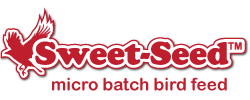How to Choose the Best Hummingbird Feeder

With all the options available, how do you know if you have chosen the best hummingbird feeder? After all, hummingbird feeders come in a huge array of sizes, shapes and styles – but which one is best (and safest) for your backyard hummingbirds? Understanding the different characteristics of hummingbird feeders can help you choose the exact one your hummers will love.
You Can Be Picky When Choosing a Hummingbird Feeder…
There are many factors to consider when you choose a hummingbird feeder, and for many backyard birders, it is personal preference that leads them to the best selection. When you are choosing a new feeder, note…
- Style: There are two basic styles of hummingbird feeders – inverted tubes and simple saucers. Both can feed hummingbirds equally well. Inverted tubes are often easier to see if they need refilling, while saucers tend to leak less if they are tipped or jostled.
- Capacity: Feeders can hold as little as 2-3 ounces of nectar or as much as 32 ounces or more. If you have a large and hungry hummingbird flock to feed, a larger size may be best, but if you're just getting started, consider a smaller feeder at first.
- Feeding Ports: The more feeding ports a feeder has, the more hummingbirds it can accommodate at once. Backyard birders soon learn, however, that not all hummingbirds like to share, and may chase other hummers away from the feeder even if ports are available. It is also important to be sure that your feeder ports are large enough and are not partially blocked. Many plastic feeders have small “burrs” present in the ports as a result of how the plastic is molded during manufacturing. Simply make sure the ports are clear of these imperfections and you should be fine to begin use of your feeder.
- Mounting: Most hummingbird feeders hang from hooks or branches, but some have strong suction cups to mount directly to windows for up close, personal views of these tiny birds. Window feeders are generally smaller, however, and birds may be more wary near a window.
- Color: Most hummingbird feeders incorporate at least some red on the base, reservoir or accents, and hummers are quickly attracted to bright red feeders. They will visit any color feeder, however, so choose a color that works well for you. After all, many of the flowers most visited by hummingbirds, as they feed in nature, are not red at all.
- Design: Hummingbird feeders come in a range of designs that may include faux flowers, colorful swirls, sparkling facets, painted accents, dangling beads or other quirky touches. It is easy to find a feeder that matches your personal backyard flair.
- Perches: Hummingbirds are well adapted to hover as they sip, but some feeders offer small perches to give the birds a place to rest. Birders who want to take photos of hummers may prefer feeders with perches to get better shots of these quick birds.
- Cleaning: It is important to clean hummingbird feeders regularly to minimize mold, bacteria and fungus that can cause diseases in these tiny birds. The best feeders will disassemble easily for thorough cleaning and disinfecting.
- Insect Guards: Bees and ants love sweet nectar just as much as hummingbirds, but if a feeder is covered with a swarm, birds will not visit. Many hummingbird feeders have cage-like insect guards to discourage bees and cup-like moats to keep ants away.
- Cost: Hummingbird feeder prices vary widely, from small, simple feeders that are just a few dollars to larger, more elaborate, feeders that may cost much more. Different retailers may offer similar feeders for different prices, and shopping around can help every backyard birder choose a hummingbird feeder that fits their budget. As with many things, you generally get what you pay for, but this isn’t always the case. Make sure your feeder meets your needs, and those of your hummers.
With so many variations, every backyard birder can find exactly the right hummingbird feeder to suit their preferences.
…But Will the Hummingbirds Like It?
Fortunately, hummingbirds aren't terribly picky about the types of feeders they sip from. What matters most to the birds is a safe, sanitary environment for feeding and high quality nectar to drink. By choosing a good hummingbird feeder and caring for it with proper mounting, appropriate cleaning and a hummingbird-friendly backyard, every birder can enjoy personal visits from these tiny flying jewels.
Photo by Chris F from Pexels
